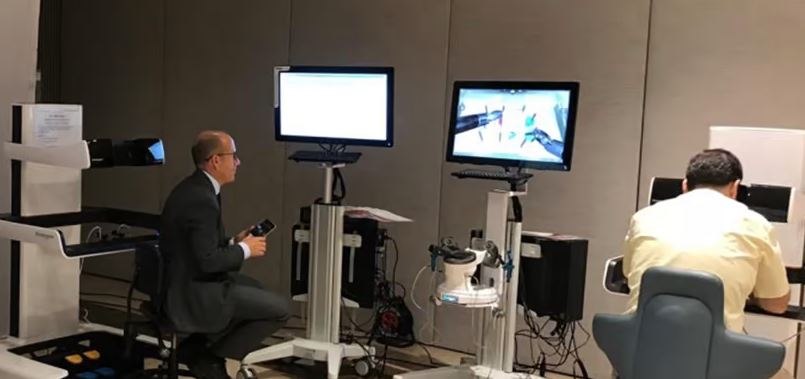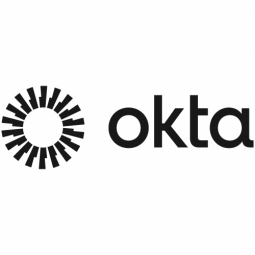Customer Company Size
Large Corporate
Region
- America
Country
- United States
Product
- Okta Authentication
- Okta Authorization
- Okta User Management
- Okta Multi-Factor Authentication
- Okta B2B Integration
Tech Stack
- Single Sign-On (SSO)
- Virtual Desktop Infrastructure (VDI)
- Active Directory (AD)
Implementation Scale
- Enterprise-wide Deployment
Impact Metrics
- Customer Satisfaction
- Digital Expertise
- Employee Satisfaction
Technology Category
- Cybersecurity & Privacy - Identity & Authentication Management
- Functional Applications - Remote Monitoring & Control Systems
Applicable Industries
- Education
Applicable Functions
- Business Operation
- Facility Management
Use Cases
- Cybersecurity
- Remote Asset Management
- Remote Control
Services
- Cybersecurity Services
- System Integration
About The Customer
Kingsborough Community College, founded in 1963, is part of the City University of New York (CUNY) system and is located in Brooklyn, New York. It is recognized as one of the leading community colleges in the United States by the Aspen Institute College Excellence Program. The college serves approximately 14,000 students, including traditional students, continuing education students, and high school students getting a head start on college courses. Kingsborough is committed to providing both liberal arts and career education, promoting student learning and development, and serving its diverse community. The college has a significant presence in its Brooklyn-Manhattan Beach neighborhood, with 2,000 faculty and staff dedicated to supporting its students. As part of its mission, Kingsborough focuses on enhancing educational opportunities and ensuring a safe and secure learning environment for its students and staff.
The Challenge
Kingsborough Community College, part of the City University of New York (CUNY) system, is recognized as one of the top community colleges in the United States. The college serves a diverse student body of approximately 14,000 students in Brooklyn. As the college embarked on its cloud journey, it faced the challenge of securing access to cloud solutions for students, faculty, and staff while maintaining a primarily on-premises IT infrastructure. The college needed to develop a multi-layered cybersecurity strategy to protect against increasingly sophisticated cyber threats. The existing infrastructure was perimeter-based, and the college sought to enhance its security measures by integrating single sign-on (SSO) and identity and access management (IAM) solutions. The college also needed to streamline burdensome student processes and ensure secure access to virtual desktops, especially in response to the increased demand for remote learning during the pandemic.
The Solution
To address its cybersecurity challenges, Kingsborough Community College deployed Okta's identity and access management solutions in 2015. The college implemented Okta Authentication, Authorization, and User Management to simplify access to cloud solutions such as Dynamic Forms, Starfish, and ExamSoft. This deployment streamlined onboarding and offboarding processes, reduced support requests, and simplified complex student processes. In response to the stay-at-home order in 2020, the college set up a virtual desktop infrastructure (VDI) using Citrix to enable continued remote learning. Okta B2B Integration was used to unify Active Directory (AD) profiles and streamline access, while Okta Multi-Factor Authentication (MFA) was added for enhanced security. The college also plans to use Okta for authentication in its mobile app, allowing users to access multiple applications without logging in multiple times. The college is exploring additional Okta features to further enhance its multi-layered cybersecurity strategy and streamline identity and access management for its community.
Operational Impact
Quantitative Benefit

Case Study missing?
Start adding your own!
Register with your work email and create a new case study profile for your business.
Related Case Studies.

Case Study
Revolutionizing Medical Training in India: GSL Smart Lab and the LAP Mentor
The GSL SMART Lab, a collective effort of the GSL College of Medicine and the GSL College of Nursing and Health Science, was facing a challenge in providing superior training to healthcare professionals. As clinical medicine was becoming more focused on patient safety and quality of care, the need for medical simulation to bridge the educational gap between the classroom and the clinical environment was becoming increasingly apparent. Dr. Sandeep Ganni, the director of the GSL SMART Lab, envisioned a world-class surgical and medical training center where physicians and healthcare professionals could learn skills through simulation training. He was looking for different simulators for different specialties to provide both basic and advanced simulation training. For laparoscopic surgery, he was interested in a high fidelity simulator that could provide basic surgical and suturing skills training for international accreditation as well as specific hands-on training in complex laparoscopic procedures for practicing physicians in India.

Case Study
IoT platform Enables Safety Solutions for U.S. School Districts
Designed to alert drivers when schoolchildren are present, especially in low-visibility conditions, school-zone flasher signals are typically updated manually at each school. The switching is based on the school calendar and manually changed when an unexpected early dismissal occurs, as in the case of a weather-event altering the normal schedule. The process to reprogram the flashers requires a significant effort by school district personnel to implement due to the large number of warning flashers installed across an entire school district.

Case Study
Implementing Robotic Surgery Training Simulator for Enhanced Surgical Proficiency
Fundacio Puigvert, a leading European medical center specializing in Urology, Nephrology, and Andrology, faced a significant challenge in training its surgical residents. The institution recognized the need for a more standardized and comprehensive training curriculum, particularly in the area of robotic surgery. The challenge was underscored by two independent studies showing that less than 5% of residents in Italian and German residency programs could perform major or complex procedures by the end of their residency. The institution sought to establish a virtual reality simulation lab that would include endourological, laparoscopic, and robotic platforms. However, they needed a simulator that could replicate both the hardware and software of the robotic Da Vinci console used in the operating room, without being connected to the actual physical console. They also required a system that could provide both basic and advanced simulation training, and a metrics system to assess the proficiency of the trainees before they performed surgical procedures in the operating theater.

Case Study
Edinburgh Napier University streamlines long-distance learning with Cisco WebEX
• Geographically dispersed campus made in-person meetings costly and inconvenient.• Distance-learning programs in Malaysia, India, and China required dependable, user-friendly online tools to maximize interaction in collaborative workspaces.• Virtual learning environment required a separate sign-in process, resulting in a significant administrative burden for IT staff and limited adoption of collaboration technology.

Case Study
8x increased productivity with VKS
Before VKS, a teacher would spend a lot of time showing a group of 22 students how to build a set of stairs within a semester of 120 hours. Along with not leaving the teacher much time to provide one-on-one support for each student to properly learn carpentry, it also left a considerable amount of room for error. Key information would be misinterpreted or lost as the class was taught in the typical show-and-tell way.

Case Study
Scalable IoT Empowering GreenFlex's Sustainable Growth
GreenFlex, a company that supports sustainable development, decarbonization, and energy efficiency, faced several challenges in its quest to expand its business. The company needed to deploy a robust and sustainable IoT technology to support its growth. It was crucial for them to monitor and control devices at customer sites in a safe and reliable manner. They also needed to integrate devices across a range of communication protocols and gather and act on data to meet efficiency targets. GreenFlex had previously built IoT capabilities into its digital platform, GreenFlexIQ, to monitor and manage customer sites remotely. However, they soon realized that they needed a new platform to support their ambitions. They needed a platform that could scale to connect more devices for production management and make it easier for the operations team to manage devices in the field.







